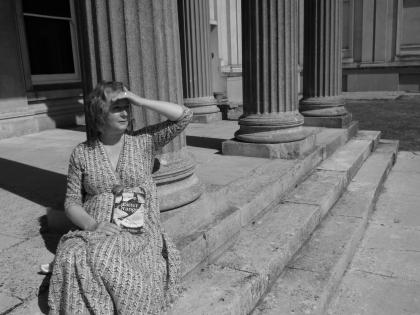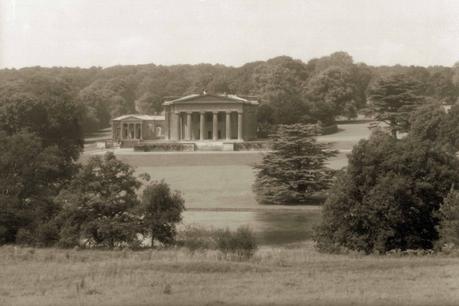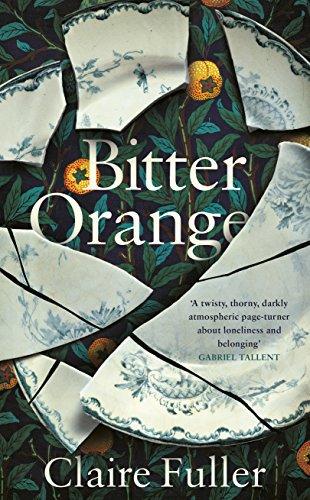 I’d like to start by thanking everyone for the exceptional response to last week’s Literary Lunch competition, which prompted a deluge of retweets, entries and appreciation for the blog. Just as well I did keep going! And since the entries took the form of book recommendations and there were so many great ones – including quite a few I hadn’t heard of – next week I’ll be doing a post on them and the wider question of book choices and the extent to which we’re affected by hype. Welcome to my new followers – I hope you’ll enjoy your visits to the Literary Sofa.
I’d like to start by thanking everyone for the exceptional response to last week’s Literary Lunch competition, which prompted a deluge of retweets, entries and appreciation for the blog. Just as well I did keep going! And since the entries took the form of book recommendations and there were so many great ones – including quite a few I hadn’t heard of – next week I’ll be doing a post on them and the wider question of book choices and the extent to which we’re affected by hype. Welcome to my new followers – I hope you’ll enjoy your visits to the Literary Sofa.
Today I’m very happy to welcome Claire Fuller as my guest for the third time. It’s no surprise that Claire has become an acclaimed voice in British literary fiction since her debut Our Endless Numbered Days won the Desmond Elliot Prize in 2015. Her second novel, Swimming Lessons, was shortlisted for the 2018 Royal Society of Literature Encore Award and when I first heard about her latest novel Bitter Orange, I was particularly excited because I have a love of novels set in big houses, especially the old and creepy kind. In my opinion it’s Claire’s best book yet, and in the review at the end of this post you can find out why.
There’s a place not too far from where I live called the hangers. It’s a short range of wooded twisting hills, so steep-sided that they haven’t been cultivated or much changed by humans, and the trees that cling there – beech, lime, yew and ash – are ancient. I regularly walk the footpaths snaking through these woods, and when I was looking for a location for my third novel, Bitter Orange, the hangers’ ghostly beauty seemed perfect.
Bitter Orange is set in a dilapidated country house called Lyntons, and deciding which house it could be based upon was never going to be a problem. About ten miles from my house in the opposite direction to the hangers is The Grange, is a neoclassical property managed by English Heritage. In the grounds there is a lake and a small flint grotto, but most of the surrounding countryside is undulating farmed fields, beautiful in their own way, but not dramatic enough for what I had in mind.
So, I shifted my house ten miles east and set it down right at the foot of the hangers. That’s one of the perks of being a writer – I can move anything to anywhere else, even whole country houses. Now the hills and woods corralled the house, keeping whatever was there isolated and contained.

But two world wars changed life for many English country estates and due to death duties their owners could no longer afford their upkeep. Many houses fell into disrepair and were consequently abandoned or demolished. (In 1955 England lost one house every two and a half days.) And The Grange was no different. It was last inhabited in 1964, and in 1972 it was almost demolished by the Baring family who had bought it, until the government got involved and the house was preserved.
And so it still stands today – preserved but unrestored. The outside is open to visitors (and free) all year round, but the inside is only accessible on certain dates for tours. And if you get to go inside you’ll understand why. Most of the interior has been ripped out, and many of the ceilings have gone (netting hangs under them to collect the falling debris). Plaster has gone from many of the walls, but enough remains to give this house an eerie atmosphere of a place kept in suspended animation. A house stopped in the final moment before disintegration.
Once I’d decided that my characters would live in a house inspired by The Grange for the summer of 1969, I visited the outside often, walking around the huge cedar of Lebanon trees, and down to the lake. The orangery (once renowned for its innovative system of channelling rainwater down its interior pillars to water the plants) now houses an opera company – The Grange Festival. The Festival hosts open days and the house is usually open as part of England’s Heritage Open Days scheme.
I visited the interior on as many occasions as I could, and I also wrote to English Heritage to ask if someone could show me around. Richard, the caretaker kindly took me into every room possible (there are still stairs up to the attic, but there are very few rooms that are safe) including every room in the basement. Here, the opera company stores its costumes and props, and so illuminated by bare bulbs I saw dummies and masks, brooms and top hats. As we walked around, Richard told me about the ghosts that haunt The Grange and confessed that sometimes even he (a down-to-earth type) doesn’t like to be there alone. I could see why. At least one of those stories made it into the finished version of Bitter Orange.
In the novel there is a bridge over the lake and follies in the grounds that Frances, the protagonist is commissioned to examine, including a mausoleum, obelisk and ice-house. It took me two years to write Bitter Orange and the landscape surrounding the house is so firmly fixed in my mind that when I go back there now, I look around and always think, but where is the bridge, where are the follies, and why aren’t there any hangers surrounding the house?
Thanks to Claire for this fascinating guest post which is practically a Writers on Location at the same time! I could really relate to what she says at the end – a well handled setting feels completely real.
House photo courtesy of http://www.alresfordheritage.co.uk

I daren’t look back at my reviews of Claire Fuller’s two previous novels because I suspect I’m about to repeat myself. If so, it’s because her work consistently delivers what I and evidently many others want from a novel, but each of the three books has a distinct personality and this is undoubtedly my favorite. One of the cruel ironies of being a writer or editor is that it can lessen the pleasure of reading, well, for pleasure. In a summer where I was determined to recapture that it was a safe bet to start with this novel, which I enjoyed and admired immensely.
Once again, Fuller breathes life into her setting with a trained eye for visual and physical detail – the prose is gloriously sensual and elegant without being overblown. To read this is to walk the abandoned corridors, hear the strange noises and, like first person narrator Frances, to be seduced and unsettled by the glamour and menace of her unlikely new friends Peter and Cara and the decaying property itself. It’s an excellent example of the admittedly slightly manufactured drama of characters being thrust into proximity – and intimacy – with individuals they would never otherwise associate with but I have no complaints about that when the result is this compelling. The pace and mounting tension are superbly handled (I’d say more but you wouldn’t thank me) and it would be hard not to engage in some way with the fate of desperately lonely misfit Frances. A tragic and haunting story with a heart beneath its jagged edges.
Advertisements
